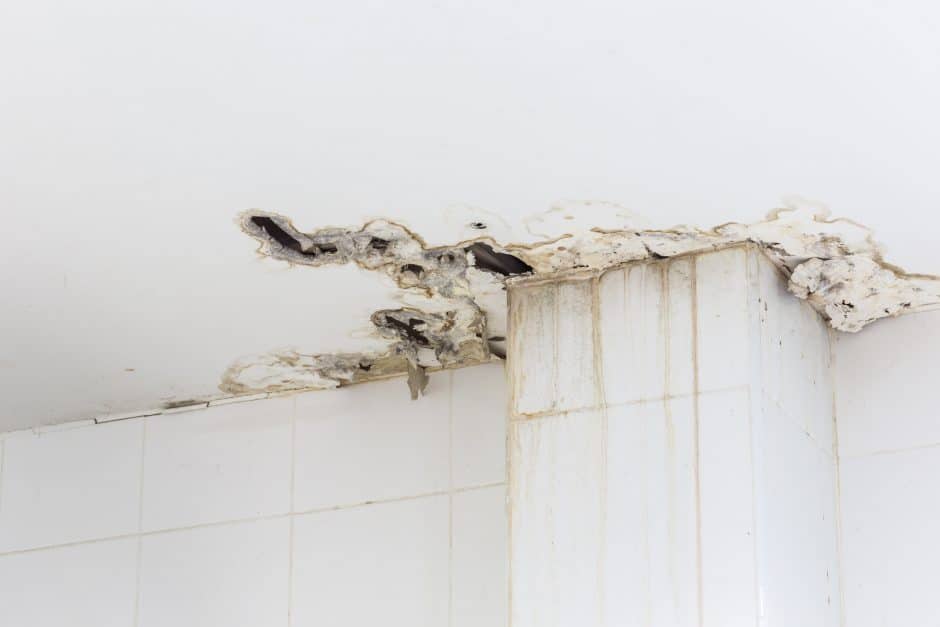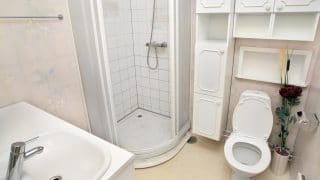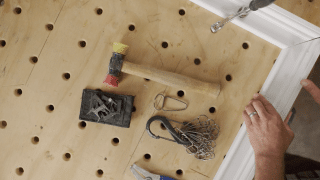
Polybutylene pipe was manufactured from the late 1970s to the mid-1990s by Shell Oil. It was a plastic, flexible pipe that was used for building new homes, mostly in the southern United States. The pipes began to have issues with leaks in the ’90s, leading Shell to cease production in 1995. A class-action lawsuit filed in 1996 awarded over $1 billion to plaintiffs to cover the cost to re-pipe more than 320,000 homes.
There are still homes with polybutylene piping systems in them, so homebuyers and homeowners alike should know about the existence of this pipe given its tendency to cause leaks and water damage. Read on to learn how to identify polybutylene and how to replace it.
What is polybutylene pipe?
Polybutylene, or PB, is a plastic resin manufactured by Shell Oil between the late 1970s and the mid-1990s. It was touted as innovative piping material thanks to its flexibility, heat and freeze resistance, and the fact it was cheaper than copper. However, as more homeowners experienced leakage issues with polybutylene pipes, a chemical reaction was found to degrade the plastic. Chlorine in drinking water reacted with the plastic, causing cracks that led to pipe or fitting failure. These leaks also led to water damage and mold growth in homes across the US.
Around this time, the University of Illinois at Chicago published a study on polybutylene plastic showing that certain chemicals in water react with PB piping, leading the fittings to become brittle, flake apart, and erode. According to the study, these small cracks can deepen with time, eventually causing the pipe to fail.
There are still homes with PB piping installed, so homebuyers and homeowners alike should be aware of potential issues with the material.
How to identify PB piping
Polybutylene piping can be identified by the following characteristics:
- ½ inch to 1 inch in diameter.
- Water supply piping only, not used for drains or vents.
- May be stamped “PB2110”.
- Generally gray or white in color, but may also be blue, black, or silver.
- Found mainly in the southern US.
- May be used as supply lines to plumbing fixtures or a water heater.
- May be used as the main water supply line, underground.
- Typically installed in basements, crawl spaces, and other unfinished areas.
Replacement options for PB pipe
If you believe you have PB pipe in your home, the first thing you need to do is call a licensed plumber. They will confirm the existence of the PB pipe, drain your plumbing system, and inspect the inside of the pipe with a camera to check its condition.
Replacing all water pipes is the best option for dealing with a home that has PB pipe, and replacing them before you have an issue may spare you having to deal with water damage and mold growth later. PB pipe can be replaced with either copper piping or PEX pipe.
Polybutylene pipe was manufactured from the late 1970s to the mid-1990s by Shell Oil. It was a plastic, flexible pipe that was used for building new homes, mostly in the southern United States. The pipes began to have issues with leaks in the ’90s, leading Shell to cease production in 1995. A class-action lawsuit filed in 1996 awarded over $1 billion to plaintiffs to cover the cost to re-pipe more than 320,000 homes.
There are still homes with polybutylene piping systems in them, so homebuyers and homeowners alike should know about the existence of this pipe given its tendency to cause leaks and water damage. Read on to learn how to identify polybutylene and how to replace it.
What is polybutylene pipe?
Polybutylene, or PB, is a plastic resin manufactured by Shell Oil between the late 1970s and the mid-1990s. It was touted as innovative piping material thanks to its flexibility, heat and freeze resistance, and the fact it was cheaper than copper. However, as more homeowners experienced leakage issues with polybutylene pipes, a chemical reaction was found to degrade the plastic. Chlorine in drinking water reacted with the plastic, causing cracks that led to pipe or fitting failure. These leaks also led to water damage and mold growth in homes across the US.
Around this time, the University of Illinois at Chicago published a study on polybutylene plastic showing that certain chemicals in water react with PB piping, leading the fittings to become brittle, flake apart, and erode. According to the study, these small cracks can deepen with time, eventually causing the pipe to fail.
There are still homes with PB piping installed, so homebuyers and homeowners alike should be aware of potential issues with the material.
How to identify PB piping
Polybutylene piping can be identified by the following characteristics:
- ½ inch to 1 inch in diameter.
- Water supply piping only, not used for drains or vents.
- May be stamped “PB2110”.
- Generally gray or white in color, but may also be blue, black, or silver.
- Found mainly in the southern US.
- May be used as supply lines to plumbing fixtures or a water heater.
- May be used as the main water supply line, underground.
- Typically installed in basements, crawl spaces, and other unfinished areas.
Replacement options for PB pipe
If you believe you have PB pipe in your home, the first thing you need to do is call a licensed plumber. They will confirm the existence of the PB pipe, drain your plumbing system, and inspect the inside of the pipe with a camera to check its condition.
Replacing all water pipes is the best option for dealing with a home that has PB pipe, and replacing them before you have an issue may spare you having to deal with water damage and mold growth later. PB pipe can be replaced with either copper piping or PEX pipe.
Most home insurance policies won’t cover homes with PB pipes, or may charge more due to the potential damage of not replacing them. If you’re planning to buy a home that has PB piping, these policies may require you to get the pipe replaced before the sale is finalized.
If replacement isn’t an option due to cost, you can cut out the bad section of the pipe and replace it with PEX. Special fittings are required since PB pipe is no longer on the market. Your plumber can advise you on these repairs until you can afford to replace all PB pipes in your home.
The bottom line
Shell ceased manufacturing PB pipe in the mid-1990s, but there are still many homes in the US that have it installed. Homebuyers need to know about PB pipe and what to do if it’s found in their home or one they’d like to purchase, as it can lead to significant leaking issues.
Plumbers recommend replacing all water piping in the home to ensure that no leaks occur. Most homeowners’ insurance won’t cover homes with PB pipe, or they’ll charge a premium to cover the cost of potential repairs. Replacing the pipe before the sale is final is likely the best course of action.
MT Copeland offers video-based online classes that give you a foundation in construction fundamentals with real-world applications, like plumbing basics. Classes include professionally produced videos taught by practicing craftspeople, and supplementary downloads like quizzes, blueprints, and other materials to help you master the skills.







